Comics pro Janelle Asselin’s in the news this week for all the wrong reasons. She took a reasonable stand and was wrongly and outrageously attacked for it.
The producers of the forthcoming documentary “She Makes Comics” — Patrick Meaney and Marisa Stotter — recently interviewed her for 13th Dimension as part of our series chronicling the making of the film. Seemed like a good time to publish it, to show the idiot haters just who they’re dealing with. Not that they’d listen. But they should.
She Makes Comics: The first question is kind of typical, but I love hearing about people’s first encounters with comics. How did you first get into the medium?
Janelle Asselin: I blame my older brother, really. Growing up he was always making his own comics, and when he went away to college he left two comics in the house: Spider-Man: Hooky and Creepshow (both drawn by Bernie Wrightson, coincidentally). I really enjoyed both and was also totally obsessed with the ’90s X-Men cartoon so when I saw comics on a newsstand at a gas station, I gave them a try. I was around 10 then and I got really intensely hooked for about a year. Growing up where I did, though, there weren’t a lot of comic shops and when I did finally go into one it was an awkward and uncomfortable experience. I stopped reading comics from then until I was 19.
Tell us a bit about your career as an editor. How did you get your first gig?
My first editing gig was with Fangoria Comics as their assistant editor. It was a very part-time job that I did on nights and weekends but I really loved that crew. Like most things in comics I got pulled in because of the people I knew. A few years before that this guy Troy Brownfield had found me on MySpace because of mutual friends and asked me to write manga reviews for a column he did on Newsarama. I agreed and eventually he also asked me to join the Best Shots at Newsarama team which he created and ran for many years. When I started to look for editing work in comics it was, to put it lightly, a struggle. There are not a lot of editing jobs out there. Troy was working as the associate editor for Fangoria and at a con one year he introduced me to Scott Licina, the EIC. Then they brought me on as assistant, where I remained for about a year before getting the job at DC.
What are some of your favorite projects that you edited?
As an assistant/associate I got to work on stuff that really I could’ve only dreamed of as a fan like Neil Gaiman and Andy Kubert’s Whatever Happened To The Caped Crusader? and a huge chunk of Grant Morrison’s Batman work. That was really surreal and amazing. But the stuff that holds a special place in my heart is always the stuff that I was lead editor on, particularly Birds of Prey and Knight and Squire. When I found out DC was bringing back Birds of Prey as part of Brightest Day, I begged to be the editor. It had been the first DC book I’d ever read, my gateway drug to the rest of the DCU, and Gail Simone was one of my favorite comics writers. It was an immensely exciting moment to be given that project.
Later, the New 52 Birds of Prey with Duane Swierczynski and Jesus Saiz became really special to me on a different level. While there were certainly challenges with the New 52 and the book as I had loved it as a fan was not going to be around anymore, the team was amazingly collaborative and wonderful and I think that what they created was awesome. Unfortunately too much of that didn’t exactly end up in the final product but the process of working with them was delightful. Finally, Knight and Squire is that project that was really my baby from start to finish. I pitched a very vague idea of it to my bosses with the idea of getting Paul Cornell to write it and was supported and encouraged to make it our super British corner of the DCU. Paul and artist Jimmy Broxton came in and knocked it out of the park, in my opinion. Of all the things I worked on at DC, that’s the one that most reflects the original vision of the creators, I think.
You write a weekly column for Comics Alliance, Hire This Woman, where you profile up-and-coming women in the comics industry. What prompted you to start this project?
So, I was at DC when the “Batgirl of San Diego” was asking questions at panels about where the female creators were in the New 52 lineup, and I was also finishing up my masters thesis on selling comics to women. Both really made me think a lot about hiring practices. For a long time I’d held the belief that if you were good enough, you’d get hired. End of story. Working at DC taught me that isn’t true. But it’s not some grand conspiracy, not in the way I think a lot of people might think it is.
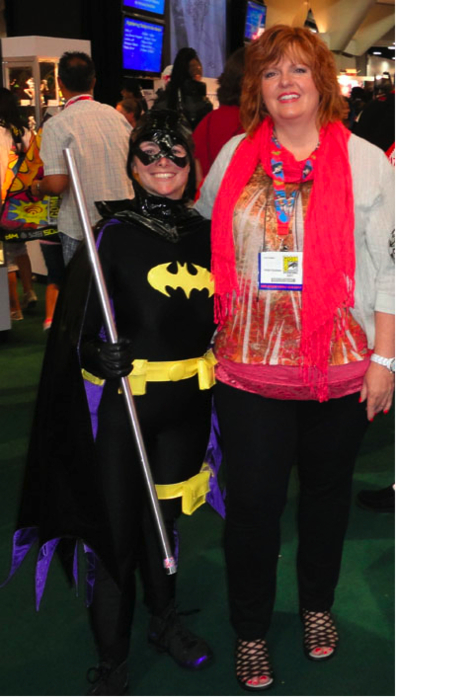
The Batgirl of San Diego, with writer Gail Simone. H/T: DCWomenKickingAss
When you’re an editor, especially an editor on monthly comic books where the company you work for owns all the characters in what it publishes, you have a different set of responsibilities than an editor who works on a less structured schedule or with creator-owned properties. The people you hire to work on books have to either be intensely reliable or immensely talented (preferably both, really). Hiring new talent is always a risk. If this person you’re trying out doesn’t hit deadlines or isn’t as skilled as you thought they were based on samples, well, that’s your fault in the eyes of the company. So when you need a fill-in to help a schedule out or you are testing out new talent on a short story, the ideal is to find people who have already proven their reliability and talent in some way. So far, this still seems like an equal playing field, right?
Then consider the fact that you have approximately 30 minutes to try to look for someone before you are given a list of people who are already proven at your company but who are looking for work because they lost their regular monthly book or haven’t had a regular gig in a while. Then add in the fact that historically your company has hired men so the creators being recommended to you are almost always male. And then add in the fact that FAR, FAR fewer women are putting their work in front of editors or pursuing these editors for work (I got one email from a woman looking for work in 3 years. I got at least one a day from male creators). Finally, add in the fact that too often, pushing for female creators over male gets you a side-eye from the powers that be. In that moment, it’s just easier to hire a dude than spend hours you don’t have digging around on the Internet for someone who might be appropriate for the job. I’m not saying it’s right. I’m just saying it’s easier.
So with all that said, the idea behind Hire This Woman was to get rid of those excuses. No comic company has the excuse of “but who should we hire?” anymore, if they ever really did. I’ve done 20+ features already. I have 80+ women on my list to get to next. Not all of them are going to be appropriate for every project, but that’s kind of the point. There are a LOT of female creators out there that are ready for something bigger or different than what they’ve done so far. I want the column to be a resource both for the publishers who are looking to have a more diverse freelancer pool and for the women who are ready to self-promote. There are thousands of dudes out there pushing for every possible job in comics. We have to make the point that there are also thousands of equally talented women that could be hired as well and take away the excuse that they’re hard to find or untested.
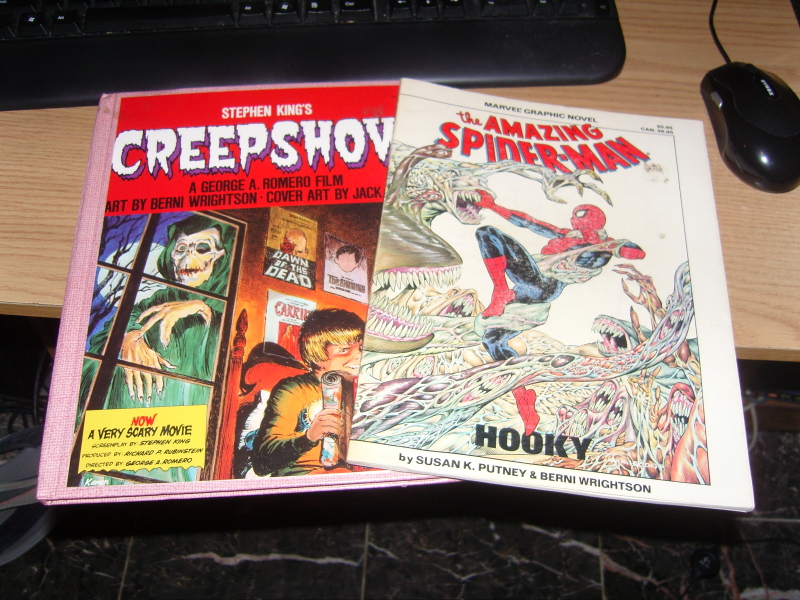
Found this on the CBR forums. Someone else has the same taste!
We also hear that you’re writing a book about marketing comics women. What sorts of interesting things are you finding as you research for the book?
Well I think the most consistently backed thing I’m finding is that female consumers have more power and influence than male consumers, consistently. Women are generally more likely to not only tell friends about stuff they enjoyed but also buy things based on friends’ recommendation. Women who are mothers influence the next generation of consumers, both male and female. Women are responsible for 85 percent of consumer purchases, they shop online more than men and they own a ridiculous amount of tech. Women read more than men and are more likely to read a diverse set of books from various genres than men. The idea of an industry like comics ignoring such a huge and VALUABLE demographic is insane.
I’ve also been reading a lot about the value or lack thereof in dividing products by gender. Certain things you can’t really avoid making and marketing to a particular gender, like tampons. But a lot of the research I’ve been reading points to selling certain things only to boys or only to girls limits their imagination at a young age. The idea that “comics are for boys” or even “super heroes are for boys” is a construct of the society we live in that literally has no worth and potentially damages both girls and boys. Those stereotypes are just reinforced as we get older. So there are adult men who want to keep those pesky women out of their comics clubhouse not for any real reason other than they were raised to think that blue and superheroes are for boys and pink and Barbie are for girls. And sadly there are women who think the same thing and so are not willing to give comics, not just superhero comics but ANY comics, a chance.
When we interviewed you for our documentary, you talked a lot about the state of women in comics today. What are your thoughts on how women are faring in the industry and in the greater geek community?
I think we’ve hit a turning point. I really do. The community of women in comics has grown exponentially even since I first started going to conventions in 2004 (ugh that’s a decade isn’t it …). It’s so much easier to find a group of like-minded geek gals to talk to which is a wonderful feeling. It’s not just that the numbers are growing either. There’s a feeling of safety in numbers that I think has allowed a lot more women to come out about being sexually harassed or ill treated in the geek community, which is a great thing. The more people talk about that sort of thing the less it seems easy to get away with for the jerks who want to try it. So the more women that join our community and refuse to put up with that crap, the safer I think we can make it. Ideally, of course, it was already a safe community but we all know that’s not the case.
We definitely still have a lot of room for improvement, of course. Publishers of all sizes need to hire more women not just behind-the-scenes but also as comic creators. They also need to publish books that don’t just reinforce the bro-atmosphere further. Conventions need a more even split of female guests and need to make their harassment policies a priority. Retailers need to focus on having a safe and welcoming space for people of all types, male, female, nonbinary, straight, LGBTQ, white, people of color — everyone should be welcome in comics and comic shops are most people’s first exposure to our world. Everyone needs to actually market to women instead of using marketing to horrify women away from our industry.
I think there’s a loud minority of male comics fans who want to complain about those awful feminazis who are trying to ruin their comics but at the end of the day, comics folks want our money even if they aren’t quite there yet on how to make that happen. We are here, in larger numbers every day, waving our fistfuls of cash in the direction of comics. Eventually most if not all publishers, conventions, retailers, and creators will sort out how to be inclusive if it means making some extra cash, right?
Fair warning: This is a tough question. If you could spend the day with any comic book character, who would it be?
Oh that is tough. Argh. OK. So, 11 year old Janelle would say Rogue, hands down, because she’s got the best stats on those X-Men trading cards I have and also she has an awesome Southern accent and Gambit. 22-year-old Janelle would say Black Canary because she’s a serious badass. But I think to be perfectly honest and totally biased I’m going to have to say Starling because she too likes to drink whiskey and shoot guns and frankly that sounds like a better day to me than training with (read: getting my ass kicked by) Black Canary or risking getting my powers stolen or put into a coma by Rogue.

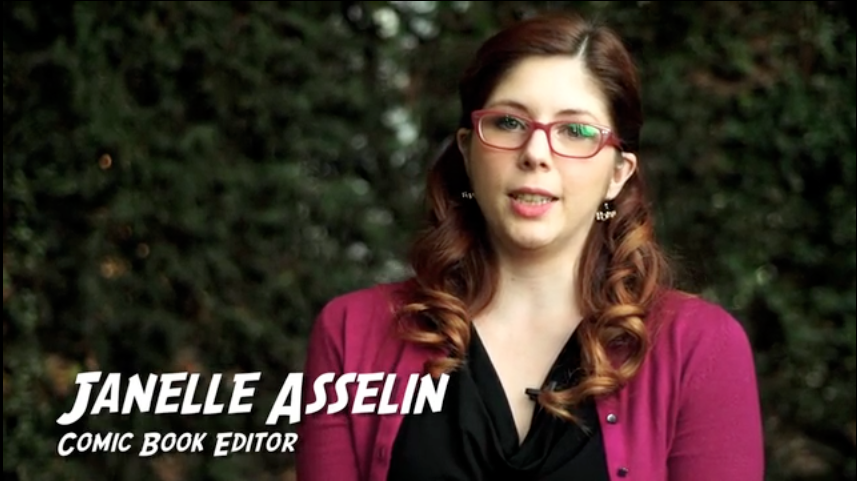
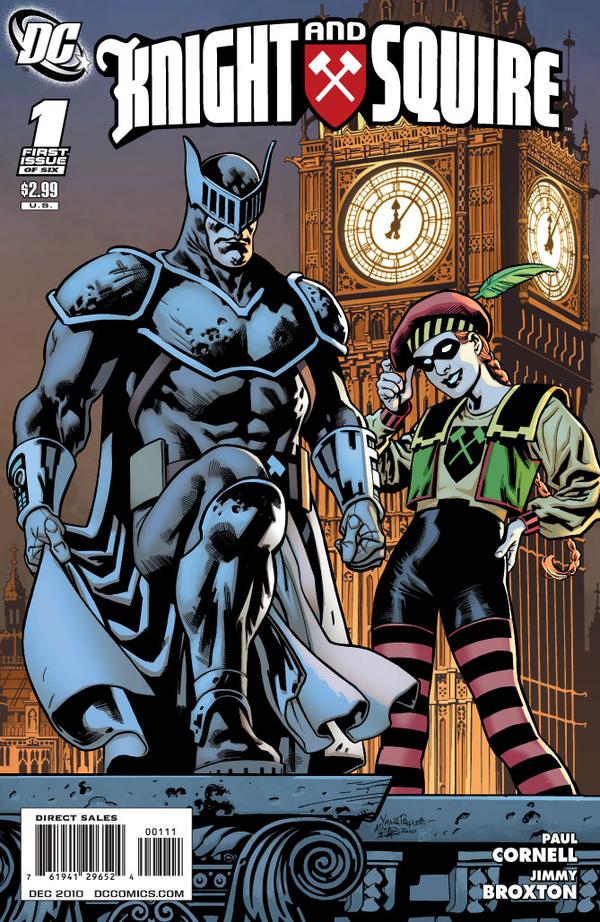
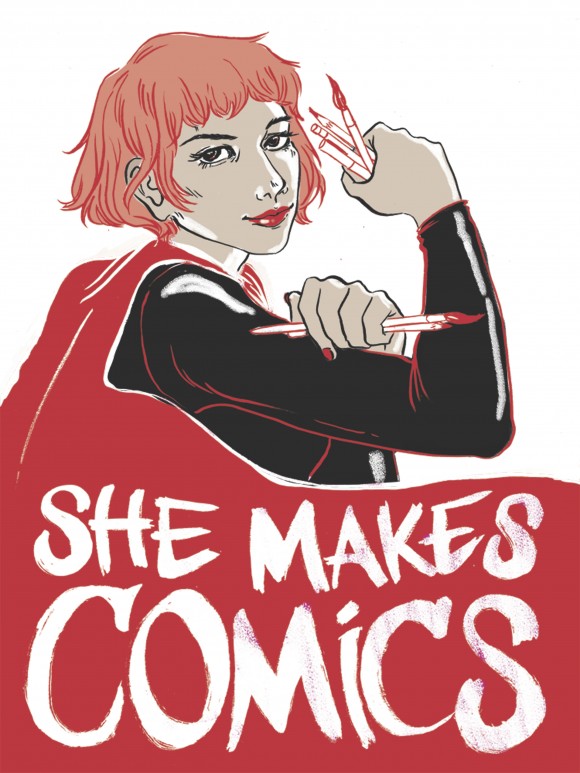
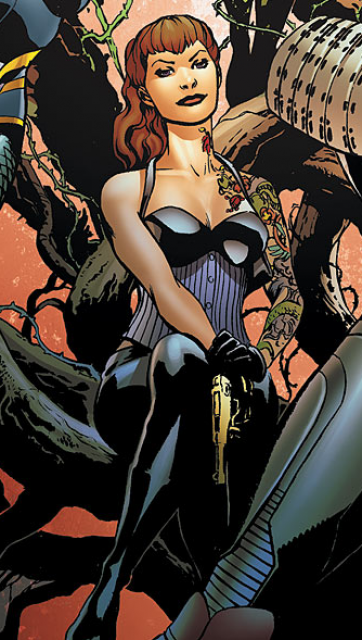
Trackbacks/Pingbacks